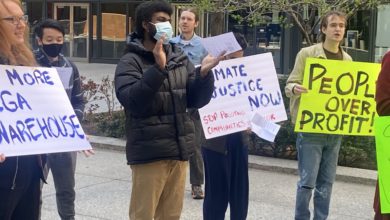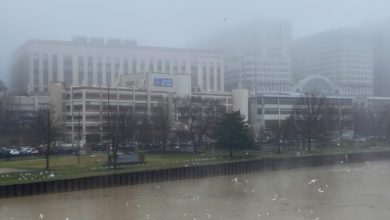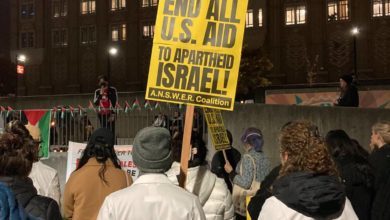For two consecutive days from Oct. 19 to 20, air quality in the greater Seattle metropolitan area was categorized as “very unhealthy,” with Seattle ranked worst city in the world for air quality and pollution. Schools limited recess and physical activity to a light level and kept students inside while team practices and games were cancelled or moved indoors. Many people experienced worsening of problems like asthma and face concern over the long term health consequences of prolonged exposure to such unhealthy air. For people without homes or those who must work outdoors, the level of exposure is greatest. Yet, the city and county have done little to protect the most vulnerable beyond recommending that people remain indoors and opening one emergency smoke shelter. Neighboring counties did even less.
Wildfire smoke has persisted in the Seattle area for much of September and all of October along with unusually high temperatures and dramatically low precipitation. The smoke seems to have finally dispersed on Oct. 21, when a wind and rain storm arrived from the Pacific Ocean to push the smoke eastward towards the Cascade Mountains.
According to the Washington State Department of Health, people particularly at risk due to smoke exposure include those who have heart and lung disease, are over 65 or under 18, or are pregnant. And as with so many of the immediate crises confronting workers and oppressed people today, the pain is unequally distributed, falling disproportionately on the poorest people, especially the homeless, who played no part in causing the problem but have little respite from it.
The fires that produced the smoke are mainly centered in mountainous areas, and resulted from an unusually long spell of warm and dry weather very uncharacteristic of the area’s famously frequent precipitation. Since July, Seattle has measured less than a half inch of rain, even less than Phoenix and Las Vegas. This was followed by Seattle’s warmest October on record, with the first 80°F October day since 1993.
The problem of a so-called “smoke” season in Seattle is relatively new, first occurring in 2018. Party for Socialism and Liberation member Devyn Forschmiedt wrote on their Facebook page:
The air quality index was around 200 today in Seattle. it smells awful. School districts sent out guidance to keep kids inside. Things start to look hazy less than a block away (photos really don’t do it justice). Mountains and skylines are completely invisible. These pictures are pretty but the sun isn’t supposed to be that color- that’s around 8a m, second picture is just a few minutes ago at about 6:30 pm.
I grew up in this area and the first time we ever had wildfire smoke in seattle was 2018. A lot of transplants assume it must be normal for the area but it’s not. This is by far the latest in the year it’s happened. It was 82° here on Sunday and it hasn’t rained in weeks, it has NEVER been like this in October. The natural ecosystem is suffering, plants need rain, this is a temperate rainforest region.
A socialist approach to dealing with chronic wildfire smoke must start by recognizing that the root of the problem is climate change, and the root of climate change is capitalism. The people and planet cannot wait any longer for a comprehensive program to mitigate and reverse the environmental damage that continues unabated while the Democratic Party controls the White House and both chambers of Congress. Baby steps and half measures are not enough. For the profound transformation needed for the people and planet to survive in the long term to happen, the existing irrational system of rule by the banks and corporations must be abolished and replaced with a new, rational system of economic planning, rooted in human need rather than corporate profit.
While continuing to fight for permanent affordable housing for all, we must also demand the immediate opening of multiple emergency “smoke” shelters to all who need access to a safe place to breathe, free distribution of high quality N-95 masks, options to work from home or paid time off for those who work outside, plus hazard pay for those performing socially necessary outside work.







